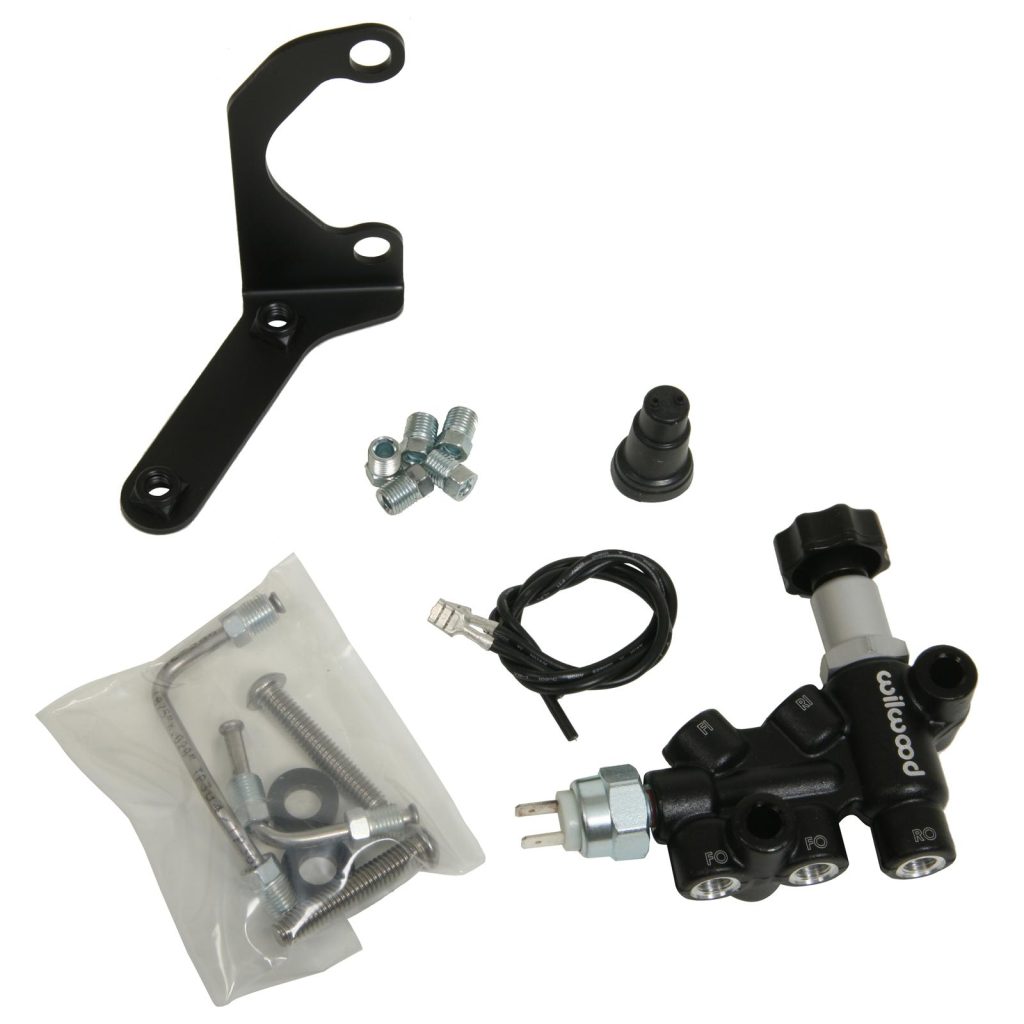I was going to buy a stock replacement proportioning valve for my 1969 Nova but a friend said that because I’ve changed so many other parts in my car that this isn’t a good idea. I don’t understand what he means and he didn’t want to explain it to me—which makes me wonder if he knows what he’s talking about. Can you explain this?
D.M.
In the old days when all cars were equipped with drum brakes, the same pressure was applied to both the front and rear drums. Because of the dynamic situation under hard braking where weight transfer occurs shifting the weight to the front end that the same pressure to the front and rear brakes would cause the rear brakes to lock up first. What is safer and easier to control is when the brakes tend to lock up all at the same brake pressure.
This is the job of the brake proportioning valve.
When the OE’s began converting to front disc brakes, the discs require a higher line pressure than the self-energizing drum brakes. This pressure difference requires a valve plumbed into the rear brake hydraulic circuit to reduce the pressure to the rear brakes. In a factory application like your 1969 Nova, this car uses a large, single piston floating caliper disc brake assembly in the front and drum brakes in the rear.
Read more about brake design fundamentals here: What’s the Difference Between Single- & Dual-Circuit Brake Systems?
For a stock vehicle with stock tires and wheels and all stock brake components, the factory distribution valve (which also functions as the proportioning valve) works well. But as soon as you begin to modify the vehicle with different size tires and wheels, change the suspension by lowering the car for example, or any number of other modifications like springs or adjustable shocks, then the OEM valve will not be optimal.
Brake Proportioning Valve Adjustment Tips
Adjusting the proportion of pressure between the front and rear brakes is something circle track and road race cars have been doing for nearly as long as there have been race cars. Several companies like Wilwood, Summit Racing, and others offer a range of different adjustable proportioning valves.
Once the valve is installed in between the rear master cylinder outlet and the rear brakes, the broad range of pressure adjustment will require you to customize the brake pressure to your specific application. The first step is to make sure the valve is installed properly. These valves will be marked with an inlet and an outlet. These must be connected properly to ensure the valve works correctly.
It’s always a good idea to read the instructions but in most cases, turning the knob fully counter-clockwise will reduce the pressure to the least allowed. Some enthusiasts think that this will cut the rear pressure to zero but this is not the case. All proportioning valves will allow some pressure to the rear brakes but their range of adjustment will vary.
To begin, turn the valve all the way counter-clockwise and drive the car easily to test the brakes. Assuming the rear brakes do not lock up prematurely, you can add rear pressure by turning the knob clockwise roughly two turns and again test the brakes. Light brake application will probably not lock the rear brakes. This will require a more aggressive use of the brakes.
This means you must to find a safe environment to do this testing away from traffic and obstructions. With a gradual increase in speed you can test the brakes for premature rear lockup. If this occurs during testing—immediately back off the brake pedal so the rear does not lose traction. This could cause the car to spin which is not a good thing. So make adjustments carefully.
The point of all this is to adjust the rear brake pressure so that the rear brakes under hard braking do not lock up before the front. Ideally both will lock up simultaneously. Also be aware that minimum stopping distance is before the brakes lock up. That is the point of more modern anti-lock braking systems (ABS). The shortest stopping distance will be achieved at what is called threshold braking or the point right before the tires lock up or slide on the pavement.
This is accomplished by modulating the brake pedal effort and is not easy, but it is a skill worth mastering. Avoiding wheel lock up also will save your tires. Sliding the tires on pavement not only causes loss of control but will also create flat spots on the tires that will cause a vibration—another good reason to avoid lockup.


Comments